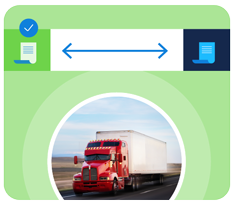When leasing commercial real estate, tenants often encounter a variety of additional expenses beyond the base rent. One such cost is Common Area Maintenance (CAM) charges. Understanding CAM charges is important for both landlords and tenants when negotiating real estate lease agreements, as they can significantly impact the overall cost of occupancy.
In this post, we will explain the details of CAM charges, how they are calculated, their relation to lease accounting, and how you can implement a lease administration tool to track lease data more efficiently.
What are CAM charges?
CAM charges are fees paid by tenants to cover the costs associated with maintaining and operating the common areas of a commercial property. Common areas are spaces that are shared by multiple tenants and may include hallways, lobbies, restrooms, parking lots, landscaping, and other amenities. These charges help ensure that the property remains attractive and functional for all tenants, and they are typically billed in addition to the base rent.
CAM charges can be variable or fixed, depending on the lease agreement. Variable CAM charges fluctuate based on actual maintenance expenses incurred by the landlord, while fixed CAM charges are predetermined amounts agreed upon by both parties.
How are CAM charges calculated?
The calculation of CAM charges can vary depending on the terms of the lease agreement. However, the most common method involves allocating costs proportionally based on each tenant’s share of the total leasable area. This is known as the tenant’s pro-rata share.
To calculate a tenant’s pro-rata share, divide the square footage of the tenant’s rented space by the total leasable square footage of the property. Then, multiply this percentage by the total CAM expenses for the property.
For example, let’s say a tenant rents 2,000 square feet in a 10,000-square-foot building, and the total CAM expenses for the property are $50,000 per year. The tenant’s pro-rata share would be:
(2,000 sq ft / 10,000 sq ft) x $50,000 = 0.2 x $50,000 = $10,000
In this scenario, the tenant would be responsible for $10,000 in CAM charges per year.
It’s worth noting that some leases may include a “cap” on CAM charges, which limits the amount a tenant can be billed for these expenses, regardless of the actual costs incurred by the landlord.
What expenses are included in CAM charges?
The specific expenses included in CAM charges can vary depending on the lease agreement.
However, some common examples include:
- Property taxes and insurance premiums
- Utilities for common areas (e.g., electricity, water, and gas)
- Janitorial services and supplies
- Landscaping and grounds maintenance
- Snow removal and pest control
- Security services
- Trash removal and recycling
- HVAC maintenance and repairs
- Elevator and escalator maintenance
- Parking lot maintenance and lighting
It’s essential for both landlords and tenants to carefully review the lease agreement to understand which expenses are included in CAM charges and how they will be calculated.
How do lease accounting standards impact CAM charges?
Lease accounting standards have a direct impact on the treatment of CAM charges in financial reporting. The standards ASC 842 and IFRS 16 govern the recognition, measurement, and presentation of lease-related right-of-use (ROU) assets and liabilities. They also affect how CAM charges are accounted for.
Variable components of CAM charges are excluded from the measurement of the lease liability and lease asset. These charges are not included in the calculation of the right-of-use asset or lease liability. Instead, variable CAM charges are recognized as an expense in the income statement during the period in which they are incurred.
The accounting for fixed CAM charges depends on an election available to the lessee. The lessee may elect to bundle the fixed CAM with the base rent and capitalize it. This is the more popular election, as it avoids the complexity and effort of allocating the payments between base rent and CAMs. It does mean however that there is more lease liability and ROU asset on the balance sheet, and if the lease is accounted for as a finance lease, it also results in more front-loading of the expense.
Alternatively, the lessee may elect to segregate the CAMs from the base payments and not capitalize the CAMs component. To do this, you would need to determine the relative standalone observable price of the base property and the CAMs and allocate the payment on that basis, which may not be the same allocation as that stated in the lease contract. Determining the standalone observable price can be onerous and impose additional accounting/audit burden, so this election would be worthwhile only if the CAMs have a significant impact on the financial statements.
Simplify CAM charges with LeaseAccelerator
CAM charges play a significant role in real estate lease agreements. To properly track CAM charges over the life of a lease, it is recommended to implement a real estate lease administration tool like LeaseAccelerator Real Estate Manager. With Real Estate Manager, you can effectively track, calculate, and reconcile CAM charges with ease. Additionally the information in Real Estate Manager can be automatically synchronized with the LeaseAccelerator lease accounting subledger, to generate complete and accurate journal entries and reporting respecting either election noted above.
Get a demo of LeaseAccelerator today.







